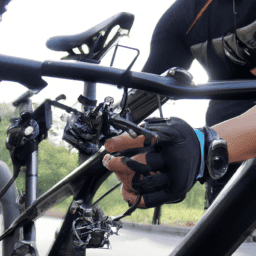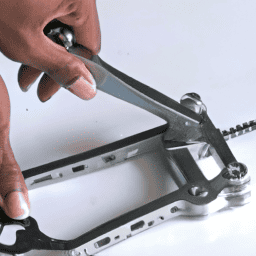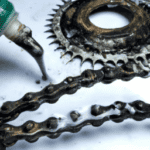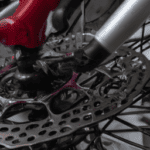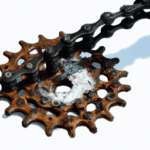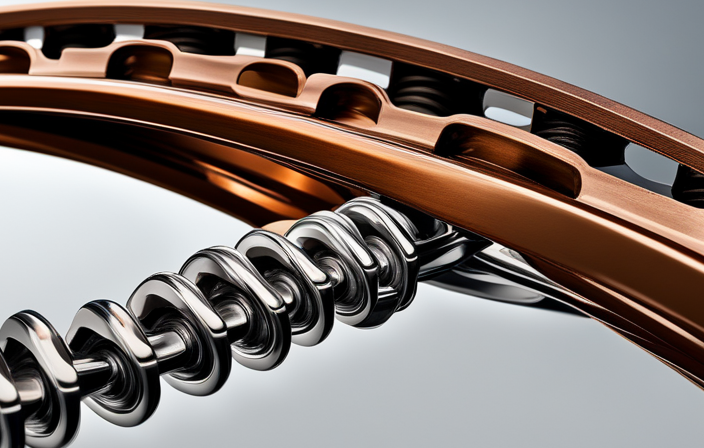Keeping a bicycle in good shape is crucial not only for its durability but also for your safety while riding. Having spent years cycling, I understand the significance of maintaining my bicycle in excellent condition.
In this article, I will share with you some of the most important steps you can take to maintain your bicycle and keep it running smoothly.
Firstly, regularly cleaning your bike is essential. Dirt and grime can build up on the chain, gears, and brakes, affecting their performance and longevity. I recommend using a gentle soap and water to clean your bike, avoiding any harsh chemicals that can damage the bike’s paint or components.
Additionally, lubricating your bike’s moving parts, such as the chain and derailleur, is crucial to ensure they operate smoothly and efficiently. A lack of lubrication can cause excessive wear and tear, leading to costly repairs in the future.
By following these simple steps, you can help ensure your bike remains in top condition.
Key Takeaways
- Regular cleaning and lubrication are crucial for smooth and efficient operation and to prevent dirt and grime affecting performance and longevity.
- Regular inspections can help catch potential issues before they become major problems, and proper storage is crucial to prevent costly repairs and safety risks.
- Winter storage requires thorough cleaning, lubrication, and storage in a dry and cool place away from direct sunlight and moisture.
- Finding a trusted bike mechanic is crucial to maintaining longevity and performance, and using online resources can help troubleshoot minor issues before taking the bike to a mechanic.
Regularly Clean Your Bike
You’ll want to make sure you’re regularly wiping down your bike after each ride, as dirt and grime can build up over time and cause damage to the components. To do this, you’ll need a set of cleaning tools, such as a bucket of warm soapy water, a sponge, a brush, and a towel.
Start by wetting the sponge, dipping it in the soapy water, and wiping down the frame, wheels, and other parts of the bike. Use the brush to scrub away any stubborn dirt or grime, and then rinse the bike with clean water. Finally, dry the bike off with a towel to prevent any water from sitting on the metal components and causing rust.
When cleaning your bike, there are a few best practices to keep in mind. First, avoid using high-pressure water hoses or spraying water directly into the bike’s components, as this can cause damage. Additionally, be careful when cleaning delicate areas, such as the chain and derailleur, as these parts are prone to damage if not cleaned properly.
By regularly cleaning your bike, you’ll not only keep it looking great, but you’ll also extend the life of its components. And speaking of extending the life of your bike, the next step is to make sure you lubricate your bike’s moving parts regularly.
Lubricate Your Bike’s Moving Parts
Make sure your bike’s moving parts are running smoothly by regularly lubricating them. Using the right lubricant can help prolong the life of your bike’s components and prevent unnecessary wear and tear.
There are different types of lubricants you can use, such as oil or grease, and each has its own specific application. When lubricating your bike’s chain, it’s important to use a lubricant specifically designed for bike chains. Avoid using motor oil or other heavy lubricants that can attract dirt and debris, which can cause damage to the chain and other components.
Apply the lubricant sparingly, focusing on the rollers and links, and wipe off any excess with a clean rag. Additionally, lubricate other moving parts such as the derailleur pulleys and brake pivot points. Proper lubrication techniques can help keep your bike running smoothly and reduce the need for costly repairs.
Ensuring your bike’s moving parts are well lubricated is just one step in maintaining your bike. Regularly inspecting your bike for wear and tear can help you catch potential issues before they become major problems.
Regularly Inspect Your Bike
Don’t neglect the importance of regularly checking your bike for any signs of wear and tear as it could potentially lead to dangerous situations while riding. Bike safety should always be a top priority, and inspecting your bike is an essential step to ensure that it is in good condition before every ride. There are several common issues that can arise with bikes, such as loose bolts, worn brake pads, and frayed cables. By inspecting your bike regularly, you can catch these issues before they become bigger problems that could lead to accidents.
To help you with your bike inspections, I recommend using a table with four rows and two columns. In the left column, list the different parts of your bike that you need to inspect, such as the brakes, wheels, and chain. In the right column, note down any signs of wear or issues that you observe during the inspection. This table will help you keep track of any potential problems and ensure that you don’t miss anything during your inspections.
To store your bike properly, you need to take a few steps to ensure that it stays in good condition.
Store Your Bike Properly
When storing your bike, it’s crucial to remember that neglecting proper storage can lead to costly repairs and even pose a safety risk.
To start with, you should choose a suitable bike storage solution. One option is a bike rack, which can hold your bike vertically or horizontally. Another option is a wall mount, which allows you to hang your bike on a wall.
Whatever option you choose, make sure that it is stable and secure, so that your bike won’t fall or get damaged.
Winter bike storage tips are especially important if you live in an area with cold temperatures and snow. Before storing your bike for the winter, clean it thoroughly to remove any dirt, salt, and grime that could cause damage to your bike.
Lubricate the chain and other moving parts to prevent rust and corrosion. Store your bike in a dry and cool place, away from direct sunlight and moisture.
If you don’t have enough space inside your home, consider renting a storage unit or using a bike storage locker. It’s better to invest in proper bike storage than to risk damaging your bike.
Knowing how to store your bike properly is important, but it’s also important to know when to seek professional help.
Know When to Seek Professional Help
As someone who’s been cycling for years, I know the importance of proper maintenance for my bike. However, there are times when I need to seek professional help to ensure that my bike is functioning at its best.
In this discussion, we’ll dive into the importance of professional maintenance and how to find a trusted bike mechanic for all of your repair needs.
Importance of Professional Maintenance
Getting your bike serviced by a professional can be a wise investment in the long run. As the saying goes, "an ounce of prevention is worth a pound of cure."While DIY maintenance has its benefits, such as cost-effectiveness and the satisfaction of doing it yourself, there are certain aspects of bike maintenance that require a professional’s touch.
For example, a professional mechanic has the experience and expertise to identify and fix issues that may not be easily noticeable to an untrained eye. They also have access to specialized tools and equipment that may not be readily available to the average bike owner.
Regular maintenance by a professional can also help prevent major repairs and replacements down the line. Neglecting minor issues can lead to more serious problems that can be costly to fix. By having your bike regularly serviced by a professional, you can catch potential issues early on and address them before they become bigger problems.
This not only saves you money in the long run but also ensures that your bike is always in top condition. So, finding a trusted bike mechanic should be a priority if you want to maintain your bike’s longevity and performance.
Finding a Trusted Bike Mechanic
It’s crucial to locate a dependable bike mechanic if you want to ensure your beloved ride is in tip-top shape. Finding the right mechanic can be a daunting task, but it’s worth the effort to have someone you can trust to take care of your bike.
Here are some tips to help you find a trusted bike mechanic:
- Ask for bike shop recommendations from friends, family, or fellow cyclists in your area.
- Look for a mechanic who has experience working on your specific type of bike.
- Check online reviews and ratings of bike shops in your area.
- Ask the bike shop if they offer any warranties or guarantees on their work.
- Consider using online bike repair resources, such as instructional videos or forums, to troubleshoot minor issues yourself before taking your bike to a mechanic.
When it comes to maintaining your bike, it’s important to have a reliable and knowledgeable mechanic you can count on. By following these tips, you can find a trusted bike mechanic who will keep your ride running smoothly for years to come.
Frequently Asked Questions
What type of lubricant should I use for my bike’s moving parts?
I recommend using dry lubricants for bike’s moving parts as they offer benefits like reduced friction and resistance to dirt buildup. Choosing the right lubricant for different weather conditions is crucial for optimal performance and longevity of the bike.
Can I use a pressure washer to clean my bike?
Using a pressure washer to clean your bike can damage the delicate components and strip away lubrication. I suggest using alternative cleaning methods such as a bucket of soapy water, a soft brush, and a gentle power wash. Prioritize pressure washer safety to avoid accidental damage.
How often should I replace my bike’s chain?
I replace my bike’s chain every 2000-3000 miles, or sooner if it starts skipping or making noise. Chain maintenance tips include keeping it clean and lubricated, and avoiding cross-chaining. Signs it’s time to replace your chain include wear, stretching, and a worn cassette.
What is the best way to store my bike during the winter months?
How do I protect my bike during winter storage? Options include using a bike cover, storing in a dry area, and elevating tires off the ground. To protect tires, release air pressure and avoid hanging or stacking objects on top.
Do I need to take my bike to a professional bike shop for regular maintenance or can I do it myself?
I’ve found that DIY bike maintenance can be cost-effective and rewarding, but there are benefits to using professional bike shop services. They have the expertise and tools to identify and fix issues I might miss.
Conclusion
In conclusion, maintaining your bicycle is essential if you want to prolong its lifespan and ensure that it runs smoothly. By regularly cleaning and lubricating your bike’s moving parts, you can prevent dirt and grime from causing damage.
Additionally, inspecting your bike regularly to check for wear and tear is crucial in identifying any potential issues before they become major problems. Properly storing your bike is also critical in maintaining its condition. By keeping it out of harsh weather conditions and protecting it from theft, you can ensure that it lasts longer.
However, if you’re unsure about how to maintain your bike properly, don’t hesitate to seek professional help. Remember, a well-maintained bike is not only more efficient but also much safer to ride. So, grab a rag, some lubricant, and get to work on your trusty steed today!
The use of repetition is a rhetorical device that can grab the attention of the audience. By repeating the importance of maintaining your bike throughout the conclusion, readers are reminded of the significance of this task. As an experienced cyclist, I know firsthand the benefits of keeping a clean and well-maintained bike. So, take my advice and make sure to give your bike the TLC it deserves to enjoy many happy rides ahead.
